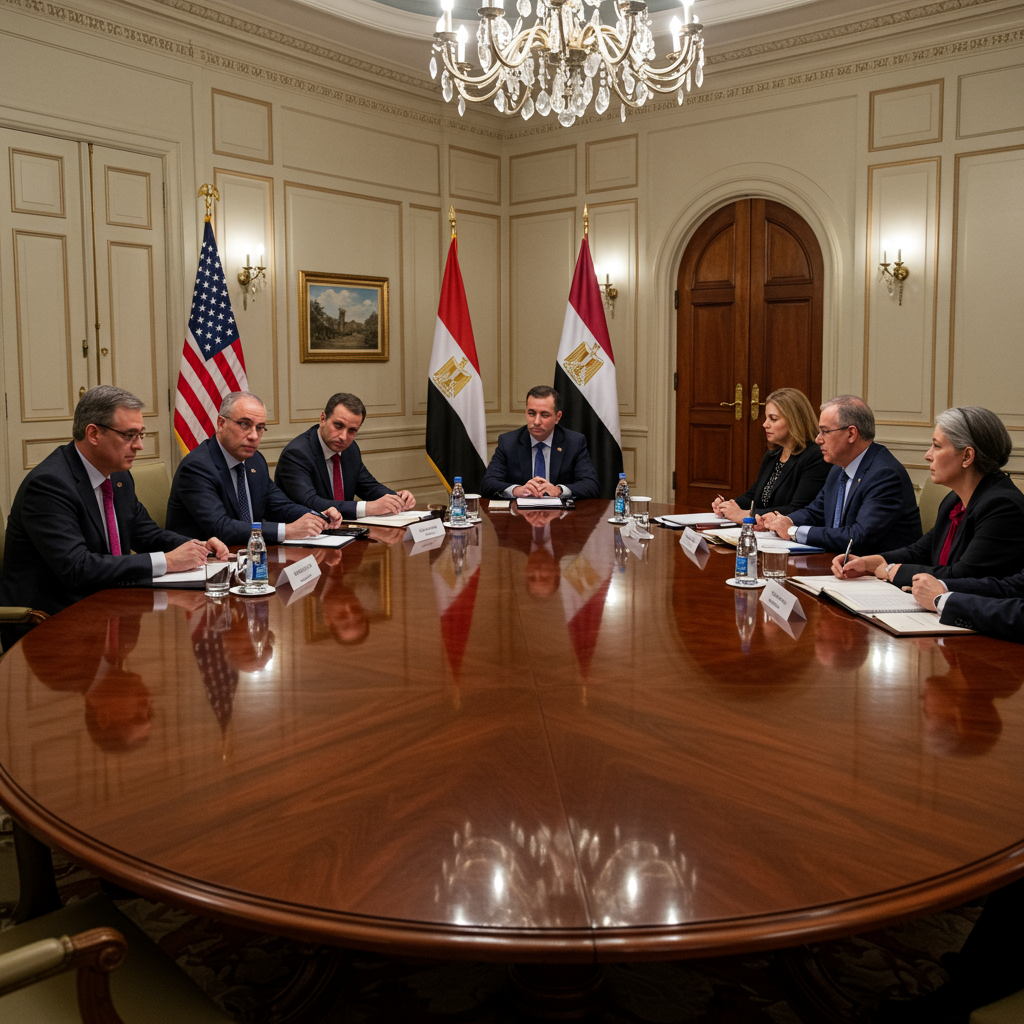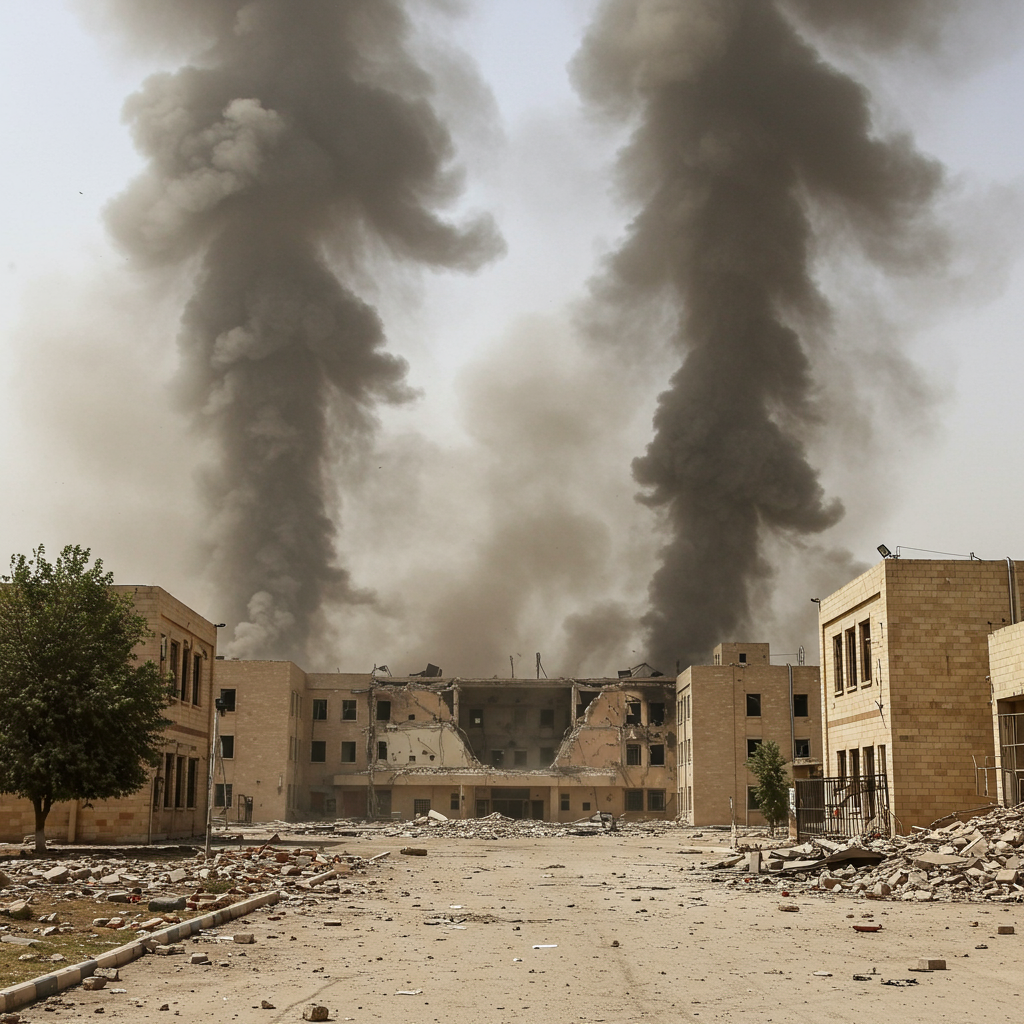Intense diplomatic efforts are currently underway to achieve a ceasefire in the ongoing conflict between israel and hamas in Gaza. After nearly two years of devastating fighting, hopes are renewed for a pause that could bring relief to the besieged territory and potentially lead to the release of remaining hostages. This latest push involves key international mediators, including the United States, Egypt, and Qatar, working to bridge significant divides between the warring parties. Reports indicate progress on a potential 60-day truce framework, though major obstacles remain. Understanding the current situation requires examining the context, the proposed terms, and the non-negotiable demands from both sides.
Why is a Ceasefire Being Discussed Now?
The momentum for a new ceasefire attempt gained traction following the de-escalation of tensions between Israel and Iran. A spokesperson for Qatar’s foreign ministry highlighted this recent agreement as creating a favorable atmosphere for resuming Israel-Hamas talks.
International pressure has also intensified dramatically. The humanitarian situation in Gaza has reached catastrophic levels, drawing widespread global criticism against Israel’s military actions and blockade policies. While the blockade imposed in March 2025 saw a slight easing in May, aid flow remains critically insufficient. Experts have warned of potential starvation for hundreds of thousands. The distribution of the limited aid has tragically been marred by violence, leading to numerous deaths among Palestinians attempting to access food.
Internal political dynamics within Israel also play a role. Prime Minister Benjamin Netanyahu faces domestic pressure, including from opposition figures like Yair Lapid, who offered conditional political support if it facilitates a hostage deal. Despite previously prioritizing the total destruction of Hamas, Netanyahu recently signaled a shift, placing the return of hostages at the forefront of Israel’s objectives. Furthermore, a recommendation from the Israeli military itself suggested pursuing a diplomatic path after extensive operations have degraded, but not eliminated, Hamas capabilities.
Details of the Proposed 60-Day Deal
Negotiators are reportedly working on a proposal that envisions a 60-day temporary ceasefire. The precise terms are still somewhat unclear, but sources suggest it builds upon previous frameworks mediated by Qatar and Egypt.
An earlier US-backed proposal outlined a 60-day pause specifically for the exchange of hostages. Under that plan, Hamas would release 10 living Israeli hostages and the bodies of 18 others captured during the October 7, 2023, attacks. The Israeli government estimates that approximately 50 hostages remain in Gaza, with around 20 believed to be alive.
Crucially, the latest proposal reportedly includes stronger assurances from the mediators about ultimately reaching a permanent end to the war. While the exact language isn’t public, an Israeli official confirmed these assurances are more robust than in previous drafts.
Another significant element is the method of humanitarian aid delivery. Israel has reportedly agreed to facilitate a surge of aid primarily through established UN-run channels. This marks a departure from relying on the controversial US-backed Gaza Humanitarian Foundation (GHF) initiative. The aim is for this surge in aid to help alleviate the severe crisis during the ceasefire period. Sources familiar with the negotiations suggest the stronger language regarding the war’s end is intended to keep talks ongoing beyond the initial 60 days.
Israel’s Stated Demands and Objectives
Prime Minister Netanyahu has consistently articulated Israel’s core objectives in the conflict. While bringing home the hostages is a paramount goal, he has also maintained maximalist aims concerning Hamas.
These broader goals include the disarmament of Gaza and the complete dismantling of Hamas’s military structure and governance capabilities. Netanyahu has repeatedly stated that there will be “no Hamas” or “Hamastan” in Gaza after the war.
However, as negotiations evolve, Netanyahu has shown a notable shift in emphasis. He recently stated that rescuing the hostages is the primary objective, followed by addressing “the Gaza issue” and defeating Hamas. This reframing suggests a potential prioritization that could create space for a temporary agreement focused on exchanges.
Sources within the Israeli military have acknowledged that while significant damage has been inflicted on Hamas, achieving all war goals through military means alone has become increasingly difficult. Targeting remaining Hamas elements, which are now more dispersed and hidden, presents a significant challenge. This assessment may contribute to the military’s reported recommendation for exploring diplomatic solutions.
Hamas’s Conditions for a Truce
Hamas has laid out its own set of firm demands that have historically been difficult to reconcile with Israel’s objectives. Their primary condition is a permanent end to the fighting. A senior Hamas official stated earlier that the group is prepared to release hostages swiftly, provided they receive a guarantee that hostilities will not resume.
Additionally, Hamas insists that humanitarian aid distribution must be managed by the United Nations, aligning with the reported term in the latest proposal. They also demand that Israeli forces withdraw from positions occupied since the offensive renewed in March 2025, specifically retreating from the northern part of the Gaza Strip.
Responding to earlier ceasefire proposals, Hamas sought firm assurances from the United States that negotiations for a permanent ceasefire would continue and that the conflict would not reignite after any temporary pause, such as the proposed 60-day period. This highlights the core sticking point: Hamas seeks a guaranteed end to the war, while Israel has often framed pauses as temporary measures to secure hostages before potentially resuming military operations.
Top Hamas officials were expected to meet recently to deliberate on the latest proposal. Should Hamas agree, Israeli sources indicate that “proximity talks” could quickly follow. In these talks, delegations would be in the same location but in separate rooms, with mediators shuttling messages to facilitate a final agreement. A key element to resolve in such talks would be the specific timeline and locations for Israeli troop withdrawal during the ceasefire period.
A Look at Previous Ceasefire Attempts
The current push for a truce in July 2025 is not the first. In the 21 months of intense conflict since October 2023, brief pauses have occurred, but they have been short-lived. Cumulatively, ceasefires have amounted to only about nine weeks out of the nearly two-year duration.
The first notable ceasefire took place in November 2023. It lasted for just one week. During this brief pause, 105 hostages were released from Gaza in exchange for a number of Palestinian prisoners held by Israel.
A subsequent, more significant ceasefire was agreed upon and came into effect in January 2025. This agreement, delayed by technical issues but eventually starting on January 19, provided the longest pause in over a year. The initial phase was intended to last for six weeks.
Under the terms of this January 2025 agreement’s first steps, three female Israeli hostages were released by Hamas on the first day in exchange for 90 Palestinian prisoners, including women and minors. Over the planned six weeks of the first phase, a staggered release of 33 Israeli hostages was anticipated, including some of the youngest captives. In return, Israel was expected to release a much larger number of Palestinian prisoners and detainees – figures ranging from 737 (approved by the Israeli government for prisoners and non-October 7 Gaza residents) to 1737 (claimed by a Gaza-based prisoners’ office) were reported.
During the January 2025 truce, Israel was set to withdraw from Gaza’s population centers but maintain control of borders and a dividing road. Aid trucks were targeted to significantly increase, aiming for 600 per day compared to the prior low average. However, the UN cautioned this was only a start for the dire crisis. Negotiations for subsequent phases, intended to move towards a permanent end to the war, were scheduled but faced significant hurdles.
The January 2025 ceasefire ultimately shattered on March 18, 2025, when Israel resumed its offensive. This move was framed by Israel as necessary to apply renewed pressure on Hamas to release the remaining hostages. The breakdown underscored the fundamental disagreement about whether pauses are temporary or stepping stones to ending the war. Israeli Foreign Minister Gideon Sa’ar stated after the January ceasefire that defeating Hamas remained the goal and that progressing to later phases was “not automatic,” highlighting the persistent uncertainty even when agreements are reached. Political opposition to the January deal within Israel, including resignations from far-right ministers, also demonstrated the fragile nature of such agreements.
Navigating Core Sticking Points
Despite renewed optimism and diplomatic efforts in July 2025, the fundamental disagreements that derailed previous attempts persist. The primary hurdle remains the duration and purpose of any truce. Hamas seeks a guaranteed, permanent end to the conflict and a full Israeli withdrawal, while Israel prioritizes eliminating Hamas’s capabilities and retrieving hostages, often viewing pauses as tactical steps rather than the war’s conclusion.
Hamas has also shown no indication that it is willing to relinquish its political authority or military power in Gaza, a core demand for Israel. The specifics of Israeli troop withdrawal during any pause, particularly from areas recently occupied, are also critical points of contention requiring negotiation.
The complex interplay of these demands, coupled with the severe humanitarian crisis and internal political pressures on both sides, makes reaching and sustaining a ceasefire a monumental challenge. Mediators continue their intensive efforts, hoping the current “momentum” and revised proposal language can finally bridge the long-standing gap.
Frequently Asked Questions
What is the current status of the proposed Gaza ceasefire deal?
As of early July 2025, a proposal for a 60-day ceasefire is under active consideration. Israel has reportedly agreed to the necessary conditions and accepted the latest proposal framework, with the Prime Minister scheduled to convene his cabinet to discuss it. Hamas has confirmed it is reviewing the proposal but has not yet publicly indicated acceptance. Mediators like the US, Egypt, and Qatar are pushing hard, fueled by recent regional de-escalation and increasing international pressure over Gaza’s humanitarian crisis.
What are the key terms proposed in the latest 60-day truce plan?
Details are still emerging, but the proposal centers on a 60-day pause in fighting. It includes provisions for releasing Israeli hostages held by Hamas, likely involving both living individuals and the bodies of those killed. Compared to past proposals, this one reportedly offers stronger assurances from mediators regarding negotiations to end the war permanently after the temporary truce. A significant change also involves facilitating a surge of humanitarian aid into Gaza primarily through traditional UN channels, moving away from the controversial US-backed initiative used previously.
What are the main demands preventing a permanent end to the fighting?
The primary obstacle is the fundamental disagreement between Israel and Hamas over the conflict’s conclusion. Hamas demands a permanent ceasefire, a full withdrawal of Israeli forces from Gaza, and for UN agencies to manage aid. Israel’s core goals include bringing home the hostages and dismantling Hamas’s military and governance capabilities, often viewing ceasefires as temporary measures for hostage release rather than the war’s end. Hamas’s unwillingness to surrender power remains a major sticking point.
The path to a lasting peace remains fraught with complexity. While renewed negotiations and specific proposals offer a glimmer of hope, the deep-seated demands and objectives of both Israel and Hamas represent significant hurdles that mediators are urgently working to overcome. The humanitarian situation in Gaza adds immense pressure for a resolution, making the outcome of these latest talks critically important.



